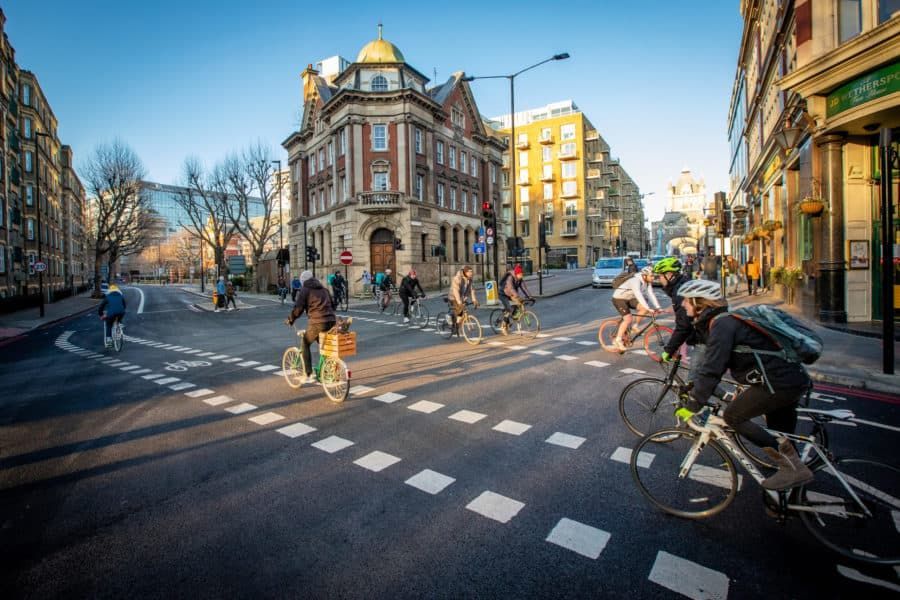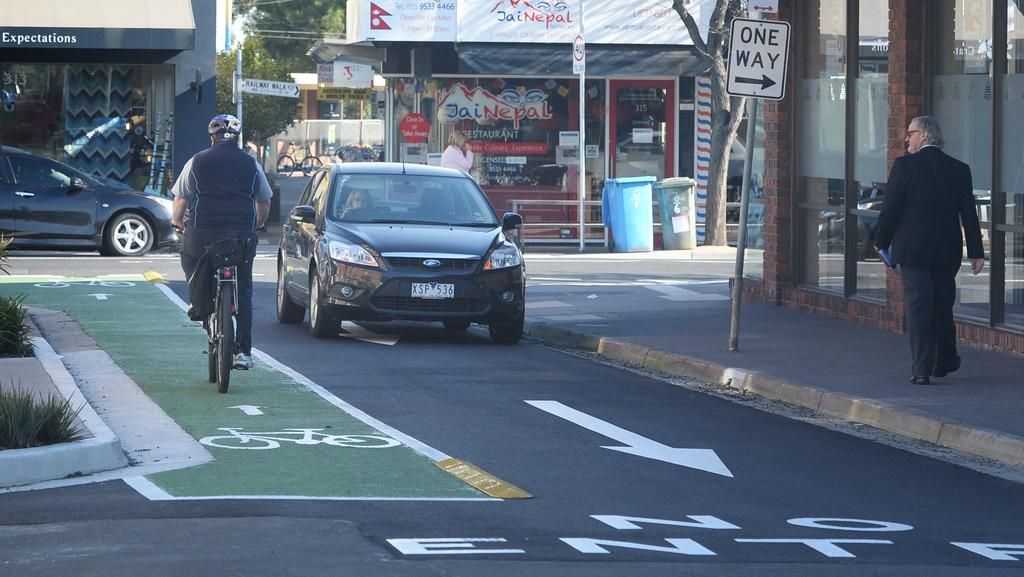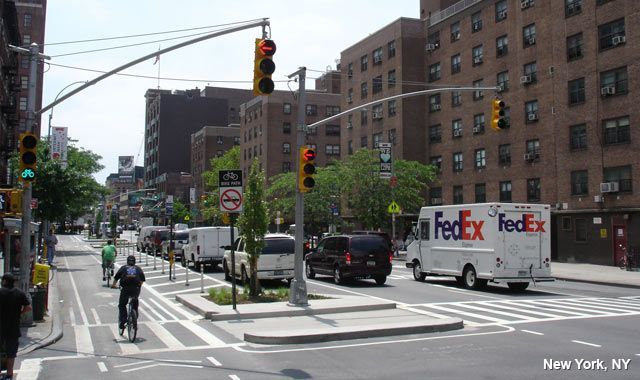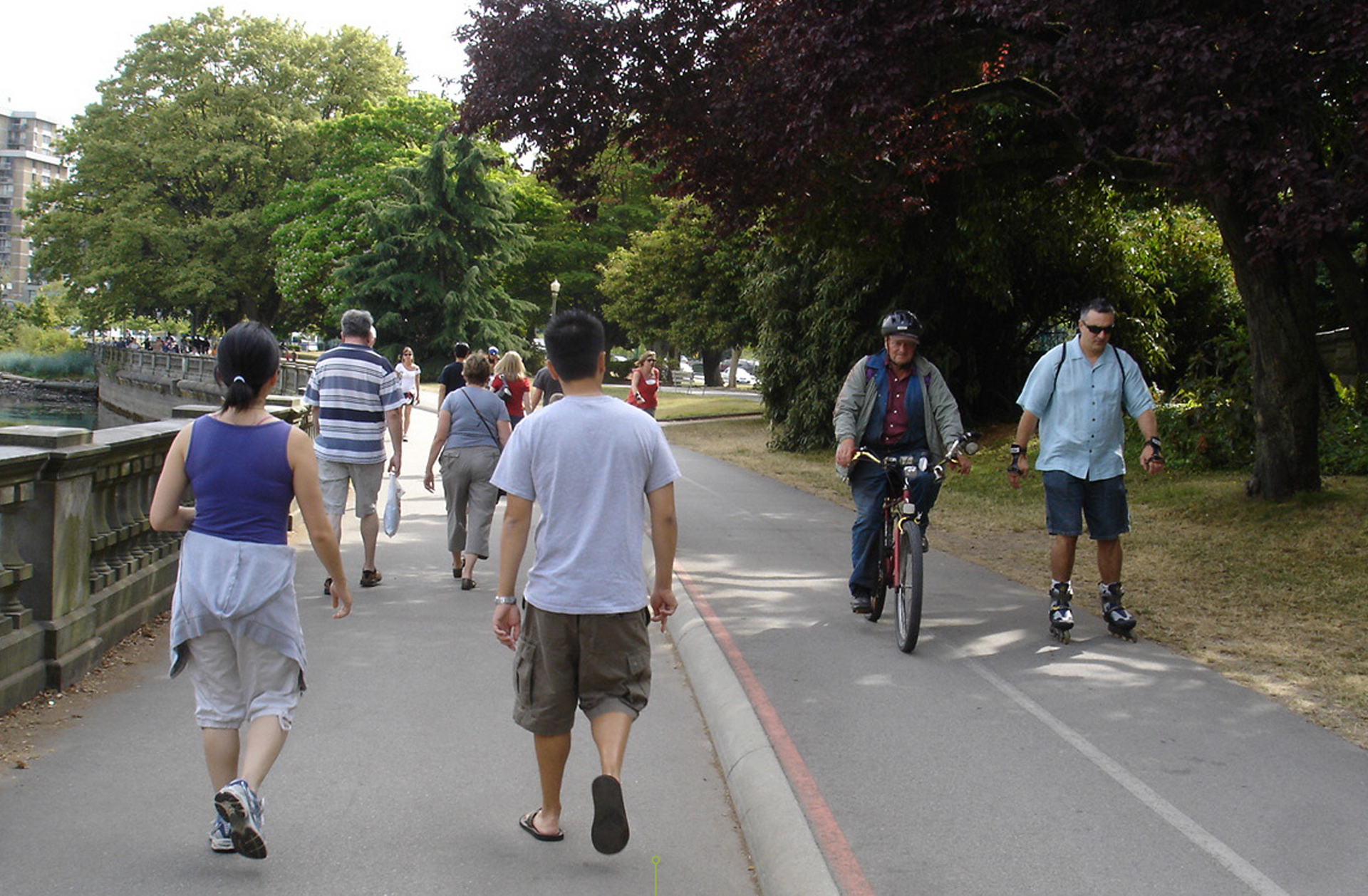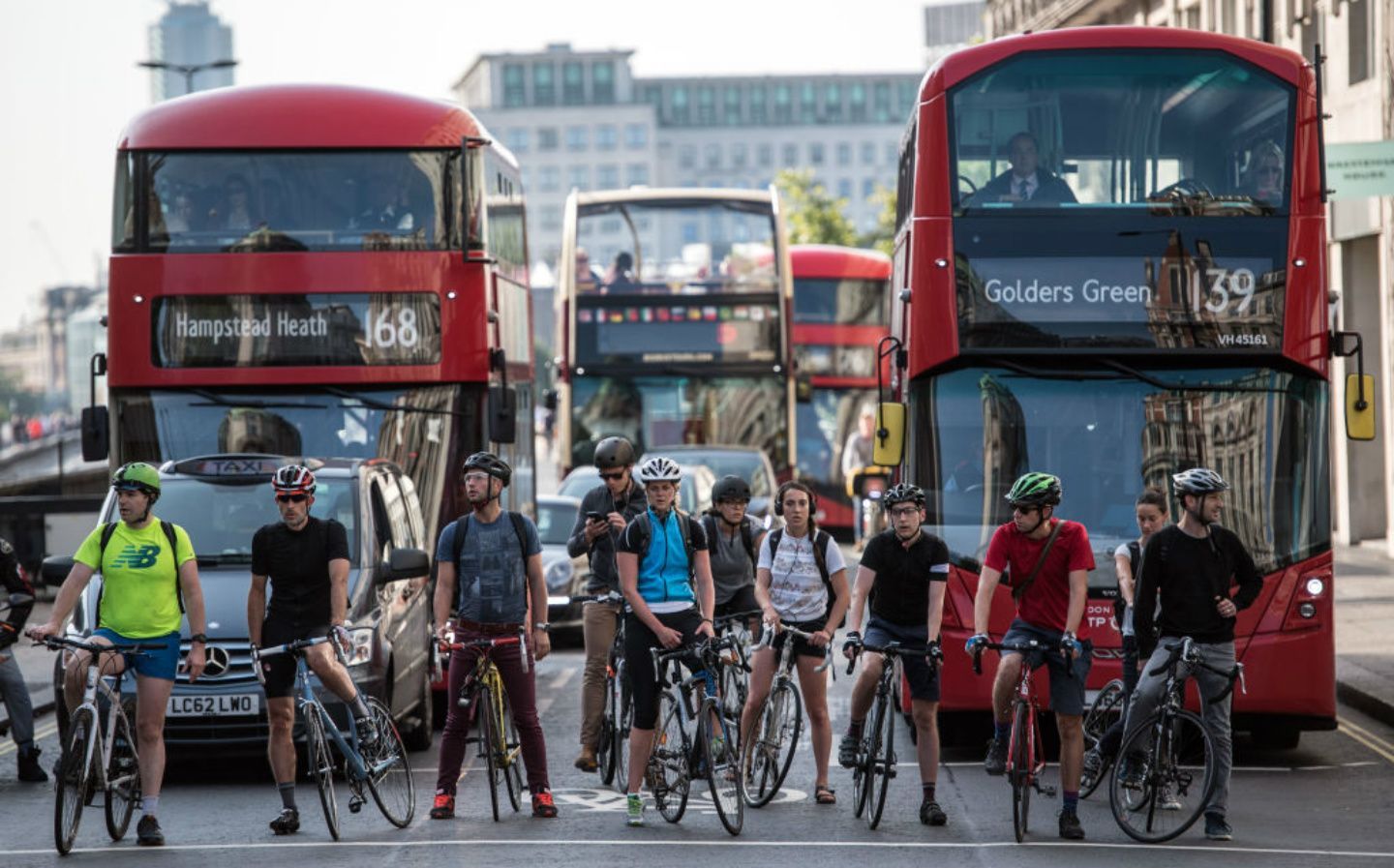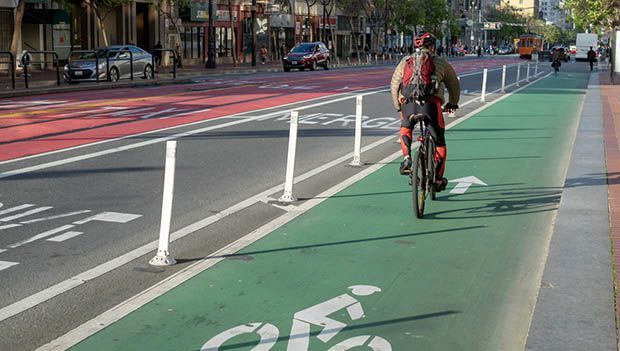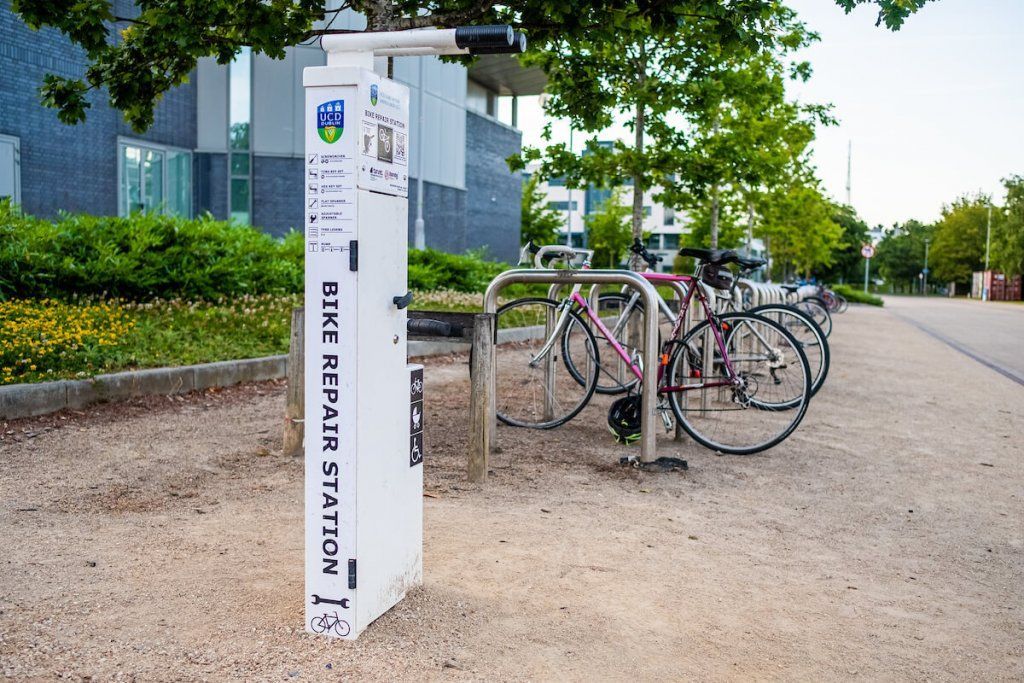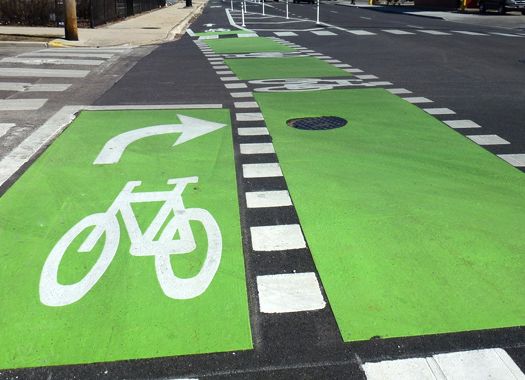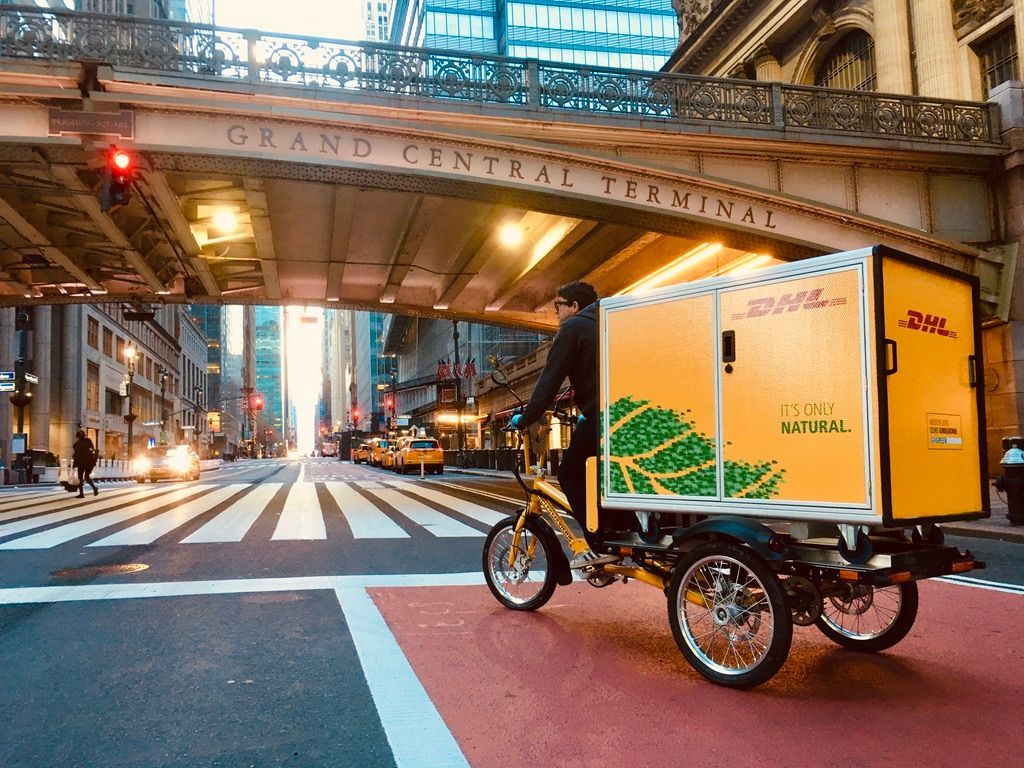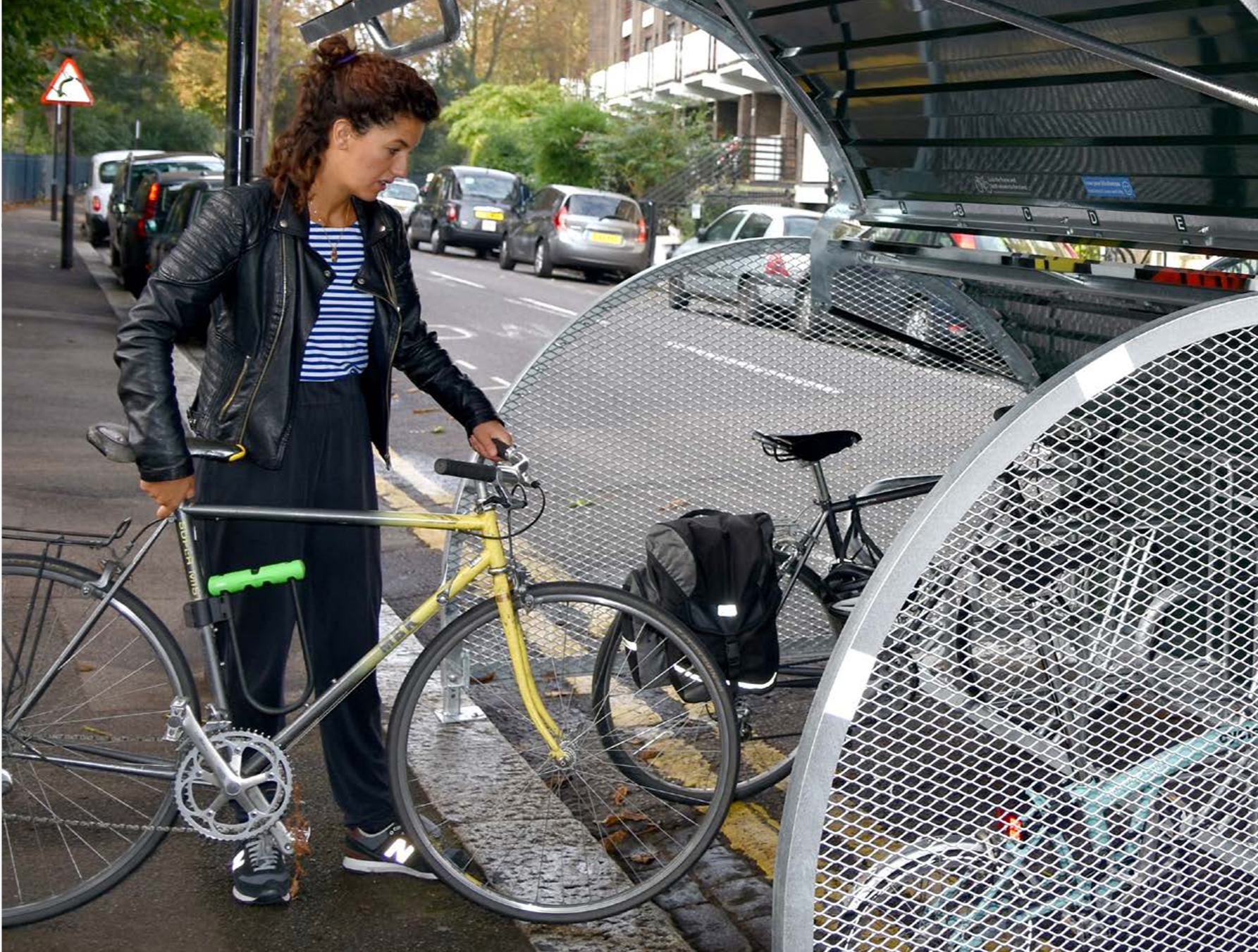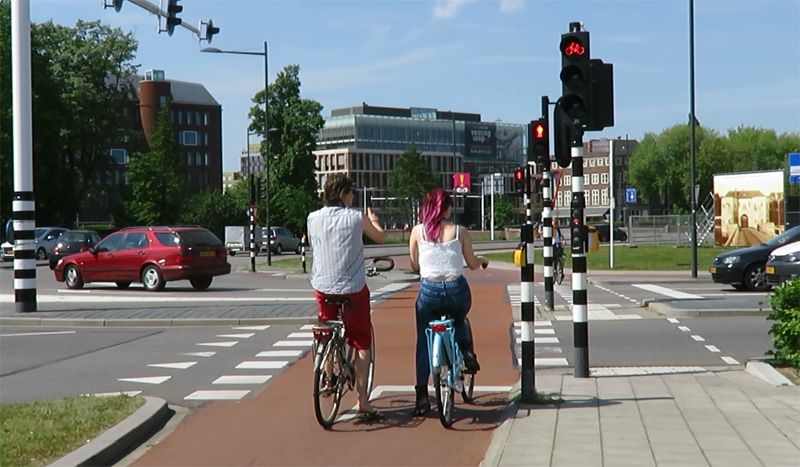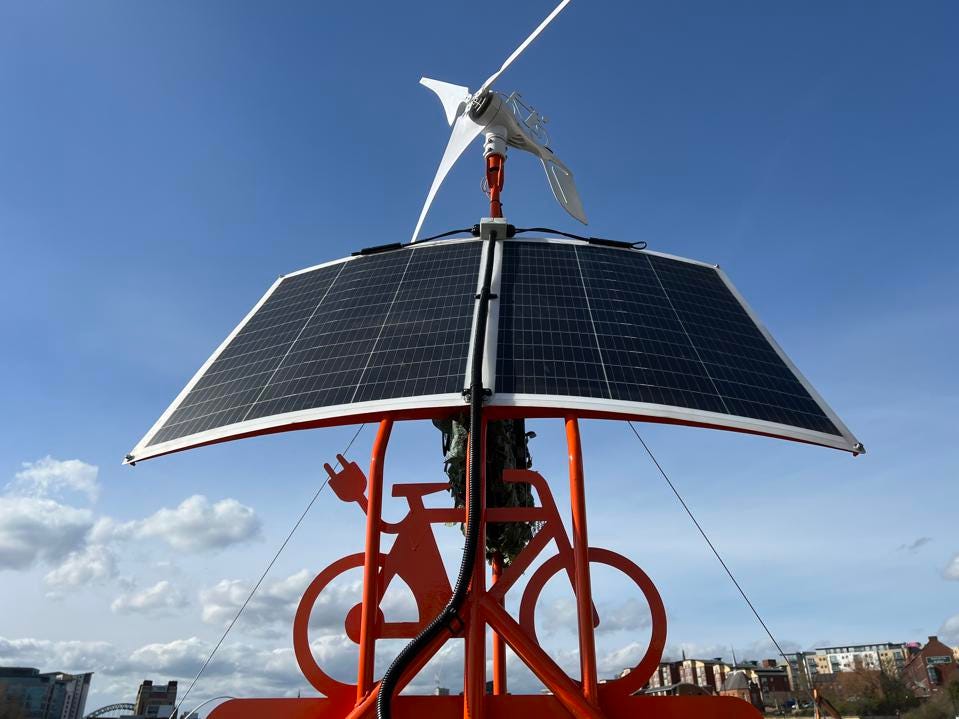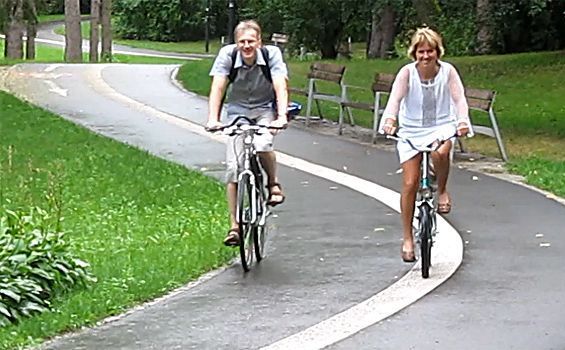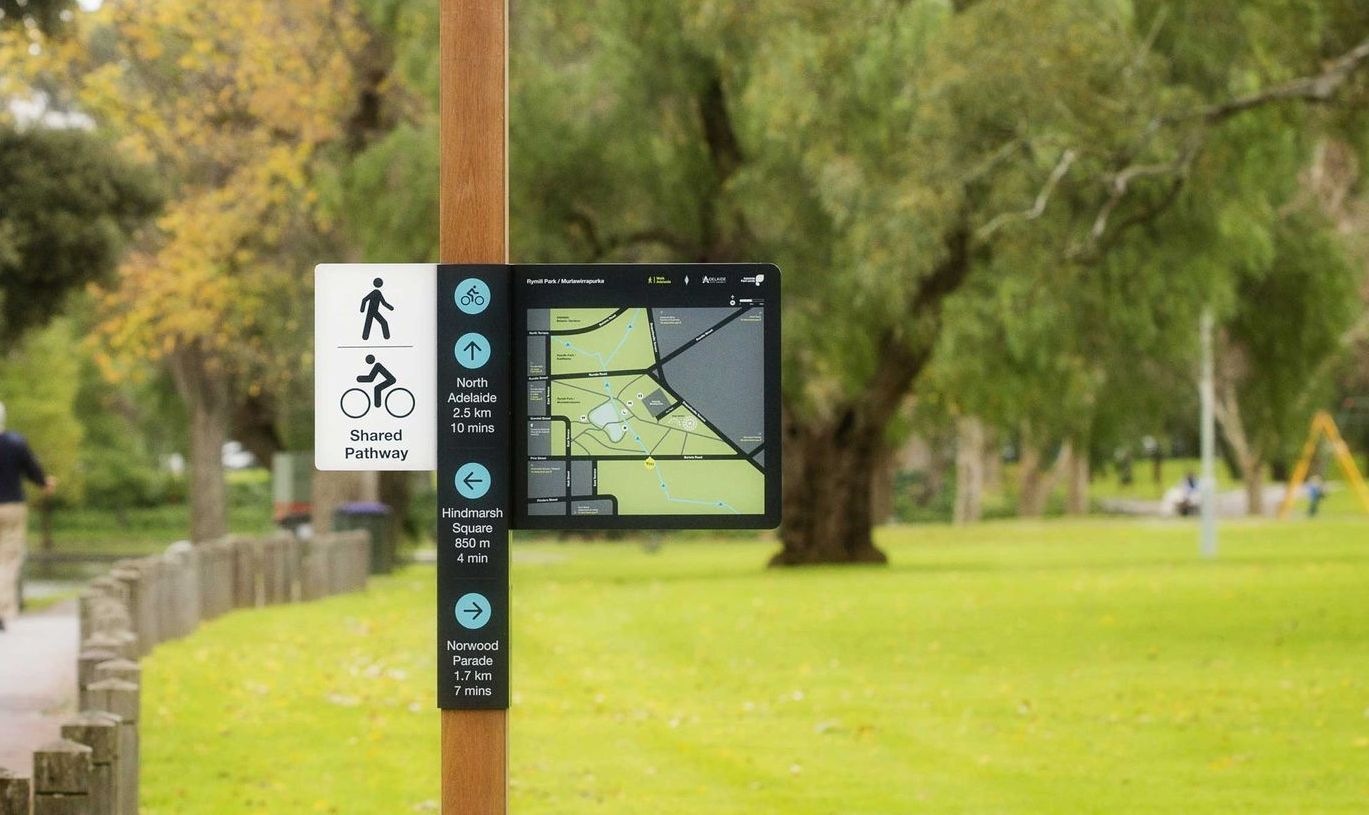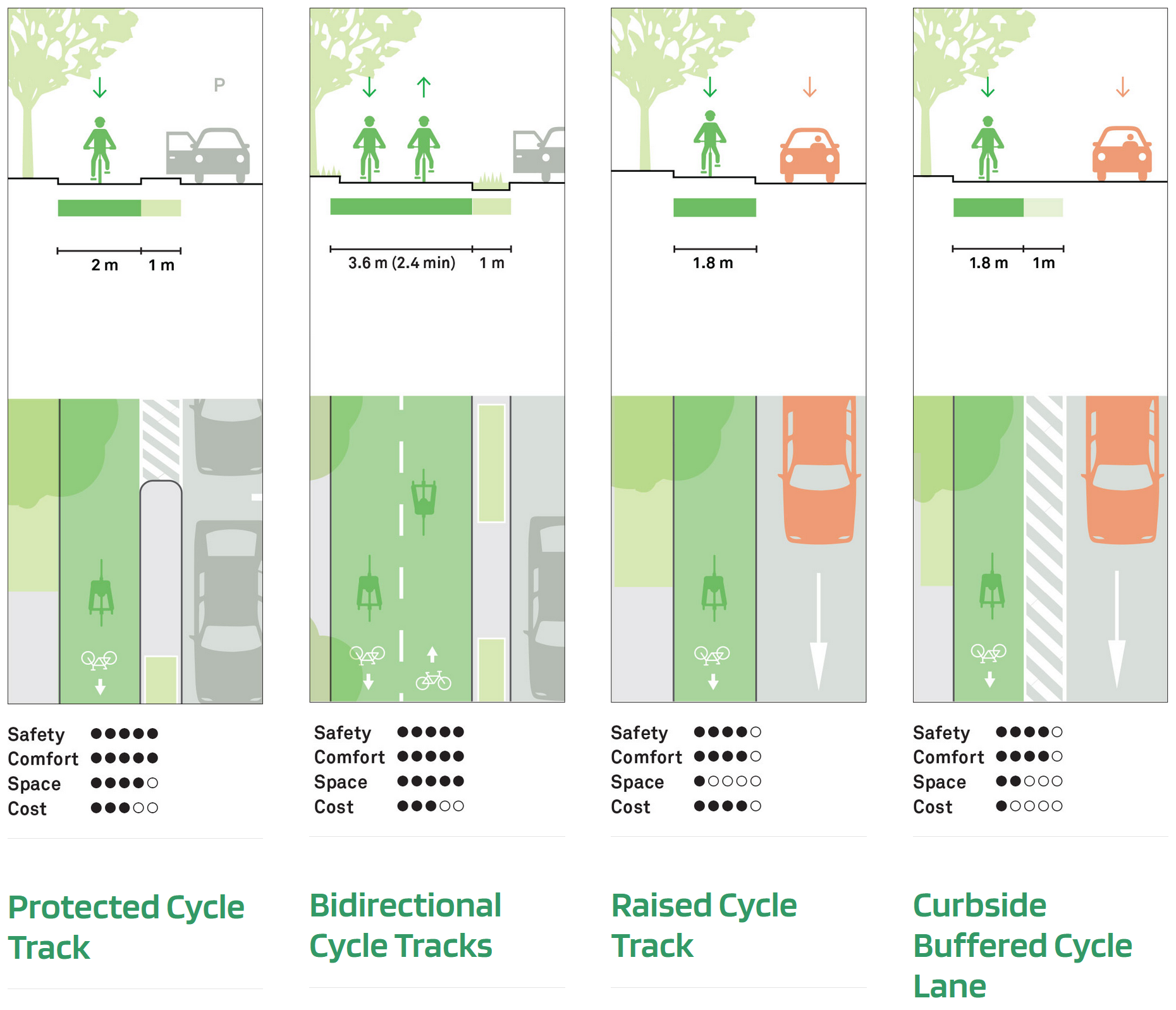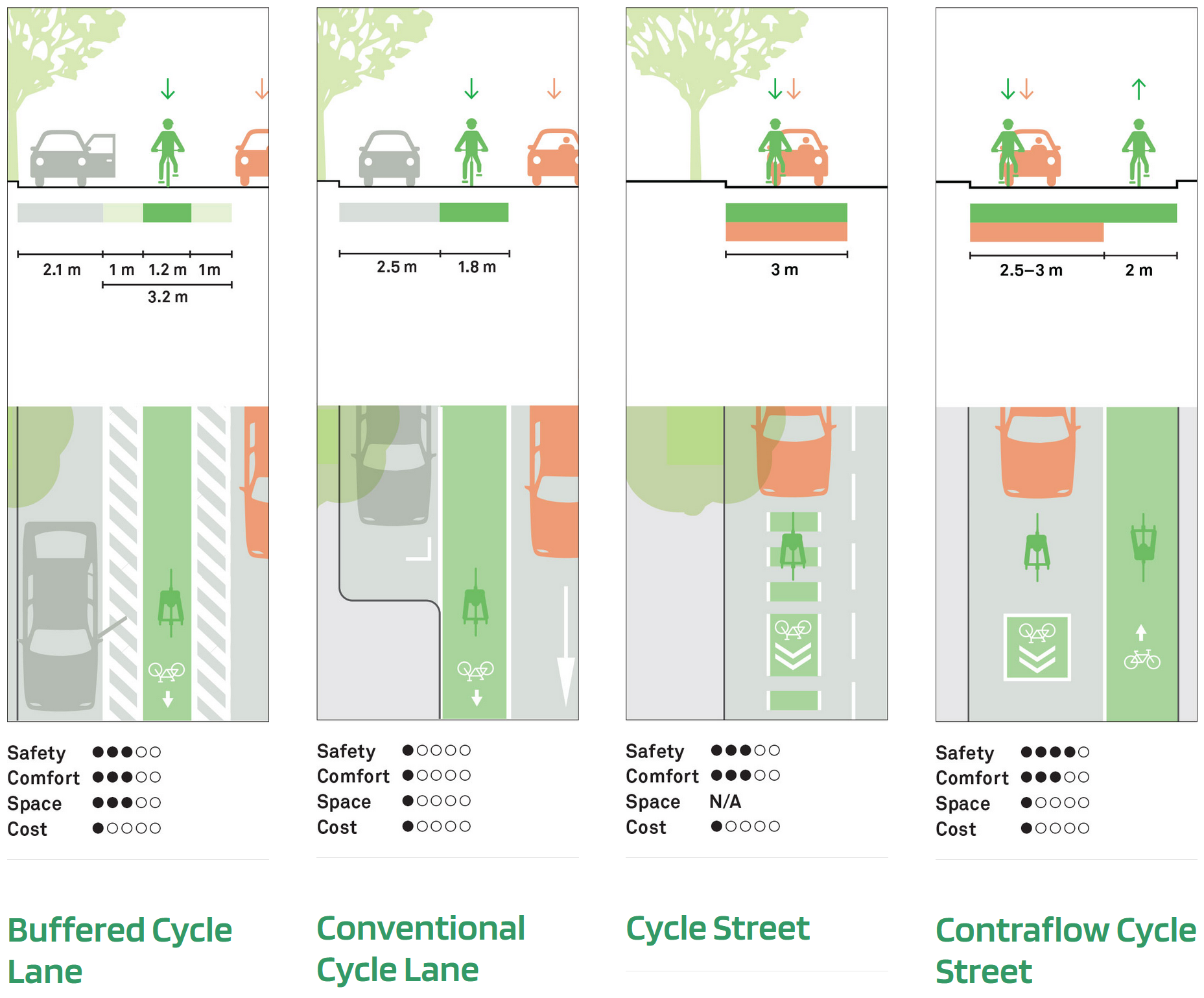
Encouraging cycling improves mobility, increases access, and enhances the quality of life in cities. Cycling should be inclusive and help address inequity in society. Cities that prioritize cycling see benefits from faster commutes and easy connections to public transit, to improved air quality and health. Promoting cycling involves building highly connected cycling infrastructure networks with minimal gaps, maximum coverage and minimal need of detours along with routes that are safe and comfortable for cyclists. Cycling improvement measures include developing cycling networks, providing infrastructure for moving cycling traffic (cycle lanes) and other measures to facilitate cycling.
Cycling improvement measures comprise the following topics:
n
Bike-and-Ride
Bike-and-Ride Services enable cyclists to cycle to the nearest bus or transit stop and put their bike on the bus or transit system, and then ride their bike the last mile to their final destination. Bike-and-Ride Shelters enable cyclists to cycle to the nearest bus or transit stop and lock their bike in a secure bike storage shelter. Cyclists can book spaces in storage shelters and as well rent e-bikes and cargo bikes at transit stops. Bike and Ride facilities can include indoor bike racks at stations, reserved lockers for individual bikes at bus stops or stations or simple outdoor racks.
n
Bikeability
Bikeability describes the extent to which an area, with its natural and built environment, is possible, safe and pleasurable to cycle in or through for the experienced and the inexperienced cyclist. Bikeability Assessments rate the safety and efficiency of cycling and can include suggestions for making a community safer for cycling. These assessments include topography, climate (wind and rain), traffic conditions, accessibility, connectivity, safety, suitability of infrastructure, etc. The US Federal Highway Administration has published a very straightforward Bikeability Checklist that can be easily used to undertake these assessments.
n
Cycling Networks
In order to promote cycling as a viable urban mobility option, a comprehensive network of cycle facilities must be planned and designed. A hierarchy of routes should be based on the existing urban street network and key destinations. Cycle networks should be integrated with transit systems and pedestrian priority areas. The design of cycle networks should consider safety, capacity, and connectivity for all riders. Design for future capacity and mode share goals rather than present-day demands.
* Source: Cycle Networks | Global Designing Cities Initiative | 2023
n
Cycle Lanes, Streets, Tracks and Highways
Special lanes that are specifically designed for the movement of cycles can provide priority and safety for cyclists. The selection and implementation of these lanes should be based on the development of connected, safe, and comfortable bicycle networks that meet the needs of people of all ages and abilities. There are six types of cycling lanes:
Cycle Lanes are dedicated lanes that have been designated by striping, signage, and other pavement markings for the preferential or exclusive use of cyclists. Cycle lanes are usually designed for movement in the same direction as traffic, but two way and counter-flow cycle lanes can also be used along one-way streets. Cycle lanes can be relatively quick and inexpensive to implement, making them one of the most common forms of cycle paths implemented in cities.
Contra-flow Cycle Lanes lanes are bicycle lanes designed to allow bicyclists to ride in the opposite direction of motor vehicle traffic improving convenience and/or safety for cyclists. Contra-flow cycling in one-way streets offers cyclists on-street shortcut links not available to motorized traffic. Allowing cyclists to use one-way streets in both directions is a very powerful way to increase the directness of cycle routes.
Cycle Streets are a form of mixed-traffic street where the needs of cyclists are prioritised over motor vehicles. Bicycles should be the dominant mode, whilst the number of motor vehicles should be minimised and so cycle streets are most likely to be implemented on through or main cycle routes where motorised traffic requires access to local destinations. Typically it will consist of a cycle track (indicated by colouring and markings) on which motor vehicles are permitted to drive.
Cycle Tracks are exclusive cycle lanes that are physically separated from motor traffic and distinct from the sidewalks (they can also be independent and considered as a road only for cyclists). They can be one or two way. They provide the highest degree of comfort and safety for cyclists. Protected cycle tracks achieve separation through raised buffers Materials, curbs, or bollards help to identify the space and prevent intrusion by motor vehicles.
Cycle Highways are high-quality functional cycling routes that focus on encouraging long-distance cycling. They can be made up of cycle lanes, cycle tracks or routes separate from the existing road infrastructure. Variations and alternative names given to cycle highways include superhighways and bicycle roads.
n
Cycling Infrastructure Measures
Infrastructure measures include the following approaches to facilitate cycling.
Advanced Stop Bars (ASB) or Cycle Boxes
These provide designated areas ahead of stop lines for vehicles at signalized intersections. They allow cyclists to get ahead of queued vehicles during a red light. They help cyclists make turns across traffic and avoid being hit by vehicles turning across the cycle lane, while reducing cyclist and driver delay.
Buffers (or Separators)
These separate cycle lanes from motor vehicles to discourage motorists from entering cycle lanes. Marked Buffers are painted spaces at least 1 metre wide and Constructed Buffers provide a physical separation (including planted separators or "Traffic Wands" (stand-alone flexible posts).
Bicycle Maintenance and Repair Facilities
These include self-service facilities and services carried out by a bicycle technician. Self-service facilities can be as simple as air pumps situated at strategic and safe locations. More complex repair stations can also offer repair tools and racks for hanging bicycles (including drinking water and hand washing facilities).
Conflict Zone Markings
These should be applied to the roadway at cycle crossings (such as intersections, roundabouts, turn lanes, or in front of driveways) with markings that alert drivers and cyclists to potential conflict areas and guide cyclists across intersections. Specific markings vary by location, but these areas should differ visually from the standard lane markings to highlight changing conditions to street users.
Cycle Logistics
These concern the delivery and transport of goods. They rely on the use of cargo bikes, trikes, special design pedal-driven vehicles, and bicycles with trailers, which can be conventional or electric. Their use allows the transport of cargo weighing up to 100 kg, and sometimes even more. There are many possible trip purposes (business, social services, running errands and purchase of goods) as well as the need for logistic specific infrastructure such as consolidation centres.
Cycle Parking
These can be simple cycle racks, cycle lockers (where each user pays rent and has a key) or high-capacity cycle parking facilities (with multilevel cycle racks). Cycle Racks are inexpensive and allow cyclists to securely park their cycles. Cycle lockers are usually shared by local residents (such as the "bicycle drum" in the Netherlands and the "cycle pod" in the UK)
Cycle Signals
These are traffic signals designed specifically for cyclists. They can be used at any intersection, especially on high volume streets and cycle streets. Cycle signals improve safety and confidence for cyclists at places with large volumes of vehicular traffic or conflict. Cycle signals—particularly those associated with protected facilities—should be part of the normal signal cycle.
E-bike (Pedelec) Charging Infrastructure
Charging an E-Bike battery is a very simple operation that only requires a normal power point. Charging stations should allow users to store their E-Bikes in a safe and secure location and to connect them to a power supply that recognises the voltage requirements of a battery, ensuring a safe and efficient recharging process. Incorporating solar panels and lithium-ion battery systems provides a perfectly independent and clean system eliminating the use of fossil fuels.
Recreational Cycle Routes
These should be attractive, scenic and most often located away from motorised traffic. They are also be known as greenways and green corridors. These cycle routes are usually designed to follow the terrain and have supporting facilities such as repair stations, bicycle parking, public toilets and seating along the route.
Wayfinding, Signages and Markings
These are elements that identify cycle routes to reach major destinations or connecting cycle facilities. These include signs with directions, specially designed street signs, and markings on the road. Signs are typically placed at decision points along bicycle routes (typically at the intersection of two or more bikeways and at other key locations leading to and along bicycle routes).
n
Cycle Measures Design Standards
The design standards for cycling facilities varies somewhat depending on national and local regulations. The examples below have been developed by the US National Association of City Transportation Officials, adapted by Global Designing Cities Initiative and published in their Global Street Design Guide.
n
Cycle Sharing (Bike Sharing)
According to the Meddin Bike Sharing World Map, there are currently an estimated 1,950 Cycle Sharing (or bike share) schemes. These schemes enable bicycles to be available for members of the public to use for limited periods, after registration and payment. All systems have bicycles that can be used in return for payment, so a registration and payment system is required, which is increasingly electronic. Most systems also have docking stations or hubs where bicycles need to be or are encouraged to be left, depending on the extent to which the technology is either on the bicycle or on the docking stand. Dockless bike sharing schemes (facilitated by electronic tracking and payment) are becoming increasingly popular (especially in China).




